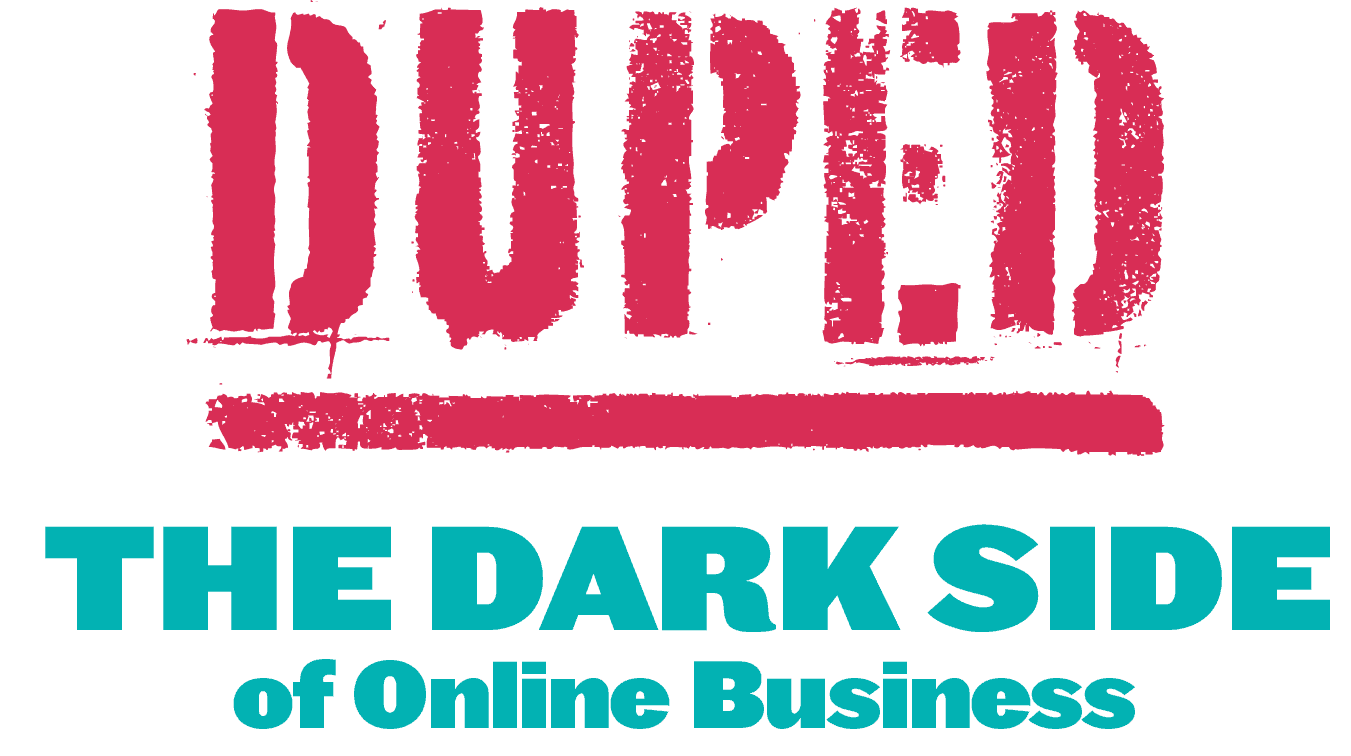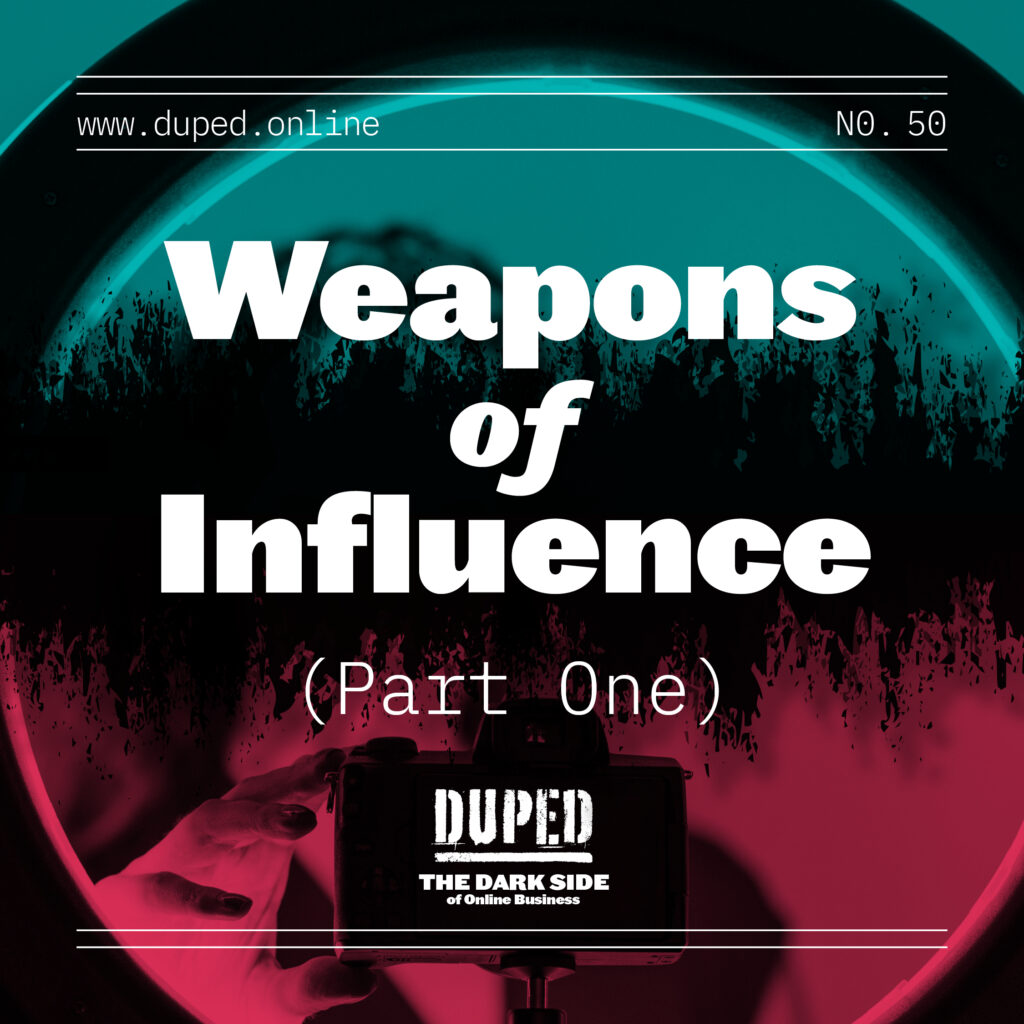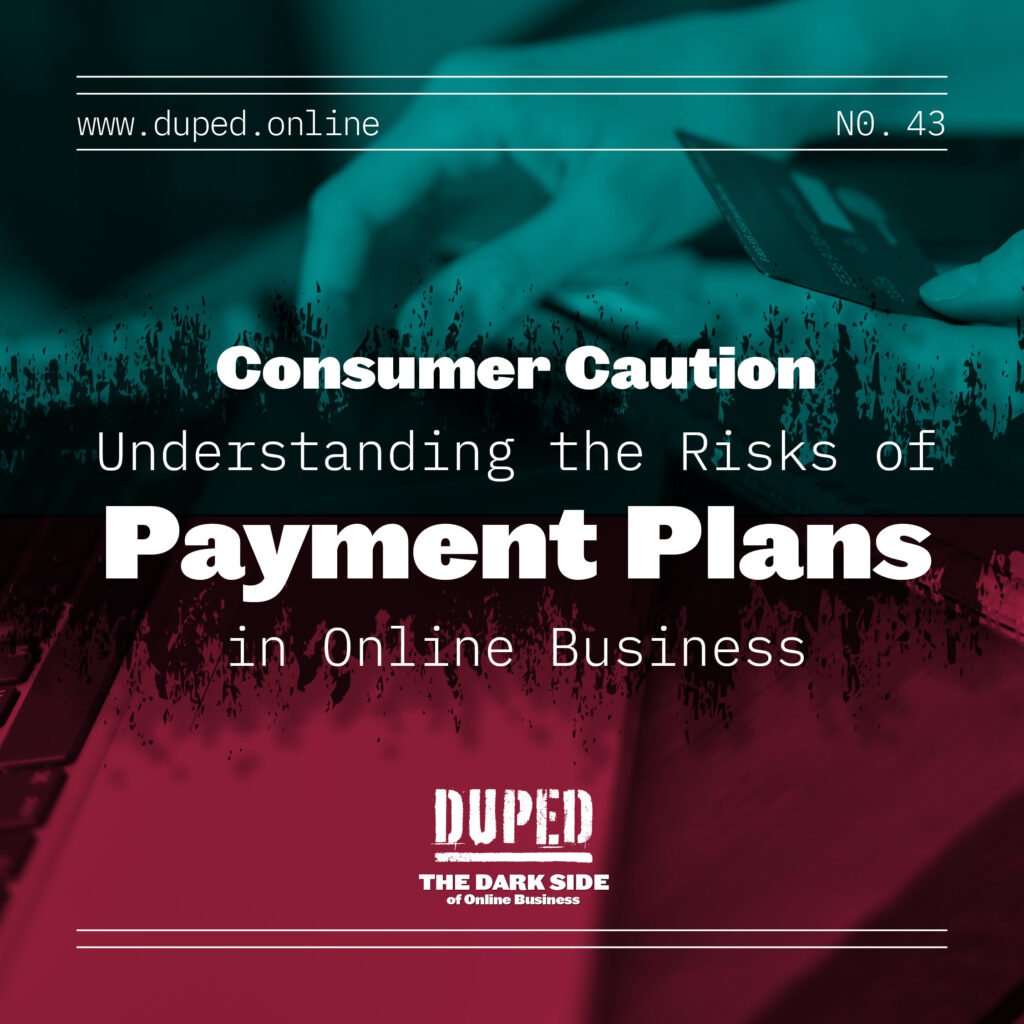
Behind the Curtain: Decoding Deceptive Tactics in Summits and JVs
Affiliates, JVs, and Summits…oh my! These collaborations can be spectacular for sales and growing an audience, but they also have a dark side that can take advantage of business owners and ultimately lead to getting Duped.

The word for the day is nuance. This is probably the most nuanced topic that we’ve ever covered.
Because, on one hand, there’s nothing wrong with affiliate marketing, summits, or bundles. These can be done extremely well. In a way that serves business owners and their audience.
On the other hand, these marketing tactics can be highly transactional in a way that can break trust and damage your relationships with your audience, wasting time, energy, and even your money. That means that even the most well-intentioned business owner can be taken advantage of and might dupe their audience.
Lots of nuance here, so let’s dive into JVs and affiliate marketing first.
Michelle is only an affiliate for people she’s personally experienced their product or people she knows and trusts completely. For example, Michelle is in the Podcast Marketing Academy for Jeremy Enns and Meg Casebolt’s SEO program, and she affiliates for both because she knows what the experience is like. She’s happy to send them referrals all day, every day.
What’s the Difference Between JVs and Affiliates?
In online business, we use these terms interchangeably to the point where it’s like growth and scale. Those two terms are not at all the same thing.
According to Shopify, “Affiliate programs work by allowing individuals or businesses (affiliates) to promote and sell products or services of a company in exchange for a commission on each sale. The affiliate earns a commission each time someone makes a purchase through the unique affiliate link associated with their recommendation.”
Let’s break this down:
- Michelle decides to promote Maggie’s really awesome course, and Maggie then agrees to give her a certain percentage of what she’s sold.
- Maggie typically sends Michelle a swipe file with a unique link to track sales.
- Michelle emails her list and promotes the offer on social media.
- In the end, Maggie sends Michelle a commission.
Whereas a joint venture is something else entirely.
According to the Small Business Chron, “Joint venture marketing is an agreement between two companies in which both organizations combine marketing strategies in order to increase their share of the marketplace and increase their revenues.”
The best example we found to make sense of this word salad was on the Warrior Forum (god help us), and Sid Hale said, “A JV partner typically contributes in some way other than just selling. They may create portions of the product or be responsible for certain aspects of the overall business (i.e., an affiliate manager). He/she typically receives a percentage of ALL profits, regardless of the marketing channel.”
This podcast is an example of a Joint Venture. We share responsibility for creating this show, still have our individual businesses, and split all the profits from the Patreon. (You should join Patreon to support the show, as it keeps us ad-free and independent.)
Now that this is out of the way, we want to focus on affiliate marketing. Here are a few places we see it go off the rails:
- The assumption is that the person promoting the product actually uses it. If you’re not, this breaks the trust of your audience.
- Not disclosing that it’s an affiliate relationship.
- Halo Effect: We think an offer is good when everyone promotes it. But it might just be the non-disparagement clause.
- Affiliate marketing overwhelm.
Now that we’ve examined affiliates and JV, let’s talk about a popular audience-building collaboration that can go awry: Summits.
What is a Summit?
Single Grain Marketing gave the most simple definition of a summit WE could find: “Essentially, it’s an online event that gathers experts to share their insights on a particular topic or set of topics.”
The summit’s goal is typically to grow the host and, hopefully, the guest speaker’s audience.
Our experiences have been a mixed bag. Here’s how it works:
- Centered around a broad topic like soulful leadership.
- Usually, a list size requirement is 5,000 people (because they want to impact 100,000 people).
- The event takes place over a week and there are like 30 speakers.
We asked Marisa Corcoran of The Copy Chat, an expert in hosting online summits, what she felt were some of the issues with this traditional online approach.
#1. Way too Many Speakers
“Most summits have way too many people on them. Way too many speakers which is not beneficial for the listeners as it’s overwhelming. I think anything above 12-13 speakers becomes overwhelming people are not listening to the interviews.”
What do you think about this information overload?
“If you’re a guest on it and you want to see the return on your investment of being part of the summit, right people send you a very generic pitch that’s like we’re gonna help you reach 100,000 people and get all these people and then it’s like well that’s not true because nobody’s listening to your interview.”
Most summits don’t work for the business owner. They spend a lot of time for very little ROI.
#2. Not Specific Enough
“The topic is very generic, the overall name of the summit we’re still in this world where summits are like “live your best life.”
The not being specific enough also tells me they are a new business owner who doesn’t know what they want to do yet. They are building an audience to build an audience
#3. Lack of Diversity
Marisa says, “I’m still seeing summits where the lineup is all white women and maybe like a white guy or all white men. We’re not actually showcasing the diverse ecosystem living online”
Chloe Nwangu says we should stop using the term underrepresented. In an article in Harvard Business Review, she writes:
“Underrecognized,” on the other hand, invites us to address the behavior driving underrepresentation: a lack of recognition. It makes the real problem more visible and puts the responsibility of change on the discriminators and the systems that both enable and trap them.”
#4. Transactional
Finally, Marissa explains, “I don’t see summits creating community and how we’ve done with the Copy Chat. I think there are some really beautiful things that you can do to create a community for people. It’s about getting people to sign up and not caring if they listen to it or not. I don’t see people emphasizing making this the most beautiful experience for the listeners flipping it around it.”
This ends up feeling like, “Hey, can I use you for audience growth” and “Hey, give me your email list because I need a big list size.”
Final Thoughts
As a consumer and business owner, what should you be wary of:
- Don’t assume an affiliate did a program or used a product. If you’re unsure, ask them about their experience with that program. If they can’t answer, then you know.
- Just because everyone is promoting a program doesn’t mean it’s good. When everyone talks up the program, it doesn’t mean it’s the right move for your business (or even very good)
- Don’t fall for the audience growth grift. Just because they say they are going to impact 100,000 people doesn’t mean that it will happen for your business
Links for this episode:
- Jeremy Enns
- Meg Casebolt
- Shopify: What Is Affiliate Marketing? Everything You Need to Know in 2024
- Small Business Chron: What is Joint Venture Marketing?
- Duped Patreon
- Single Grain Marketing: Hosting a Virtual Summit: Is It Still a Viable Strategy?
- Marisa Corcoran
- Why We Should Stop Saying “Underrepresented”
- Stephanie McNeal – Unfiltered Book
Join the

Patreon

for only $7/month and get a
monthly bonus episode,
behind-the-scenes content
and more.










